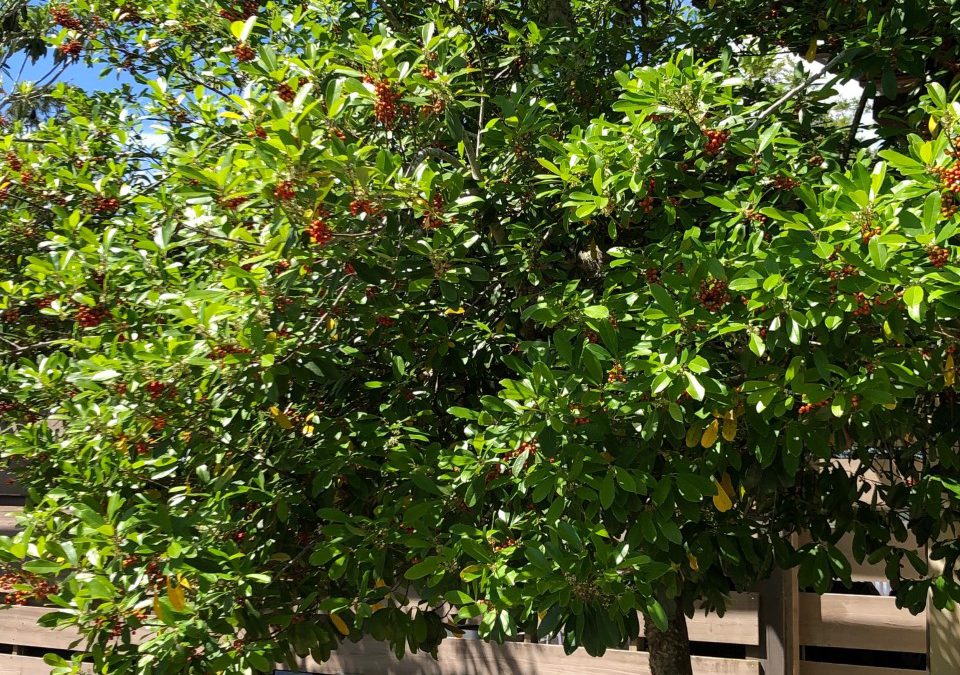
by Stephen Greer | Jun 29, 2022
There are many considerations to make when landscaping with small trees (under 20 feet) in the landscape that are not suitable for large trees. Some of the trees discussed can at times be considered large shrubs depending on definitions and opinions. For the purpose of this article, if it reaches 15 to 20 feet consider it a tree.
Choosing small trees for the right setting involves a number of reasons that could include the need for more privacy from other homes, use as a sound barrier from busy roads, hiding your utility area of the landscape or something unattractive nearby and making sure power lines are not obstructed. Other considerations might include soil types, drainage and holding capacity of the soils, irrigation needs, rate of plant growth and maturity height at 20 feet. Below are a few to consider for the Panhandle of Florida.
Little Gem Magnolia (Magnolia grandiflora ‘Little Gem’) and Teddy Bear Magnolia (M. grandiflora ‘Teddy Bear’) are strong hardy plants once established (within the first 6 months to a year). Both are evergreen with dark green foliage. The ‘Little Gem’ will grow to 20 feet tall by 15 to 18 feet wide. As it matures it tends to become more open and less dense which adds a nice character to show parts of the lower limbs. The ‘Teddy Bear’ will grow to 18 to 20 feet tall but at an even slower rate of maturity to 12 to 15 feet wide while maintaining its density of foliage from bottom to top. It may take a little work to locate the ‘Teddy Bear’ Magnolia.
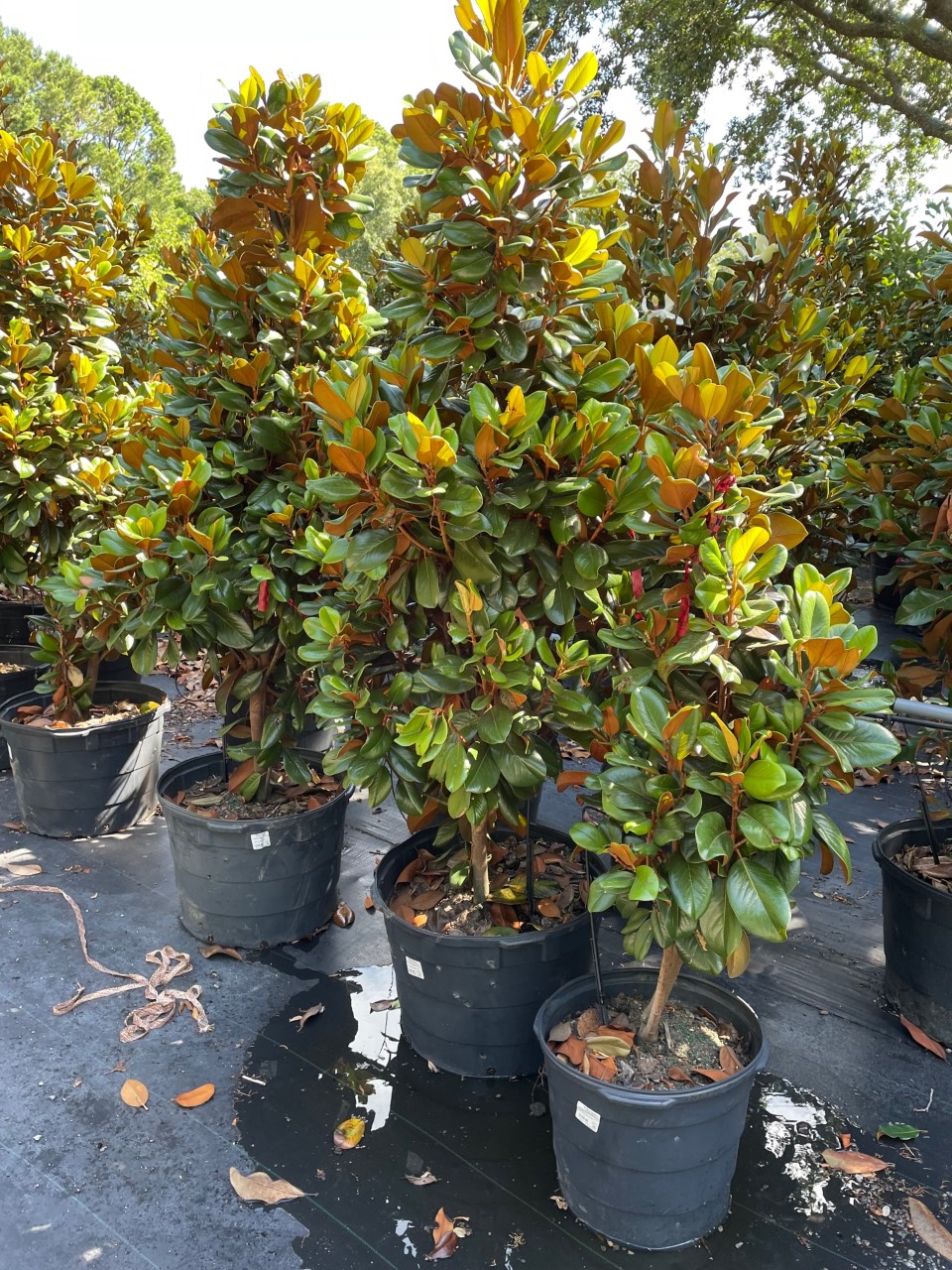
Photo courtesy: Stephen Greer Teddy Bear Magnolia (Small compact grower)
Several hollies to consider would include the Cassine Holly ‘Tensaw’ (Ilex cassine ‘Tensaw’) and American Holly (Ilex opaca). Both are evergreen and produce red berries during the fall that are bird favorites. They have similar heights of 15 to 20 feet and widths of 10 to 12 feet. Pruning can assist in shaping and slowing these measurements, but keep in mind this will change the look of the tree and create a more formal plant presentation.
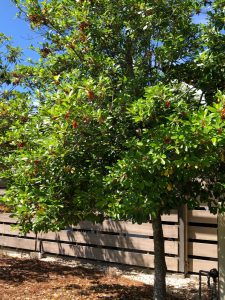
Photo courtesy: Stephen Greer Cassine Holly ‘Tensaw’
The Fringe Tree (Chionanthus virginica) has been a popular tree southeast U.S. for many years. It brings a bright spot to the landscape with white flower panicles that cover the tree in mid to late spring depending on location. For a full color effect, plant it with an evergreen hedge behind it. This oval deciduous tree will grow to 12 to 20 by 10 to 15 wide. The dark blue fruit appears in the fall and serves as good bird food source. This fruit is usually hidden behind the foliage. There might even be a nice yellow leaf change in the fall if temperatures and weather allow.
There are so many more trees to discuss and limited space to discuss them. Visit your local UF IFAS Extension office for additional assistance or visit the UF IFAS online for additional articles.
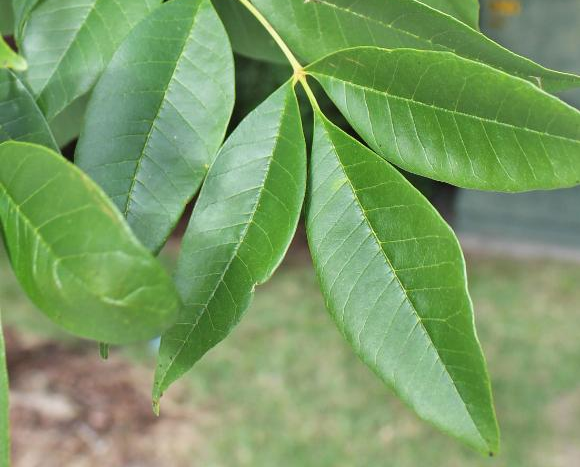
by Daniel J. Leonard | Jun 2, 2022
The Oracle of Omaha, Warren Buffett, once said “Someone is sitting in the shade today because someone planted a tree long ago.” While that’s all fine and good and I’m happy that the next generation gets to enjoy the things we grew, most of us would like to enjoy shade in our lifetimes too! If you too want to plant your own shade, one of the best rapidly growing shade tree choices for the Panhandle is the majestic Florida native Green Ash (Fraxinus pennsylvanica).
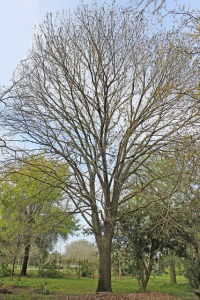
Green ash trees have a vase shape form. Photo Credit: University of Florida/IFAS
Green Ash is a large (50-100’ tall), oval-shaped, deciduous shade tree native to the entire eastern half of North America, but best of all for those of us craving shade, it grows to its mature height in a relative hurry. While most trees that grow extremely fast tend to be inherently weak and short-lived, this is not the case with Green Ash. Capable of growing 6-10’ in a single year if irrigated and fertilized appropriately and often living well over 100 years, there aren’t many plants in the Panhandle that grow quicker or live longer.
There’s much more to Green Ash than growth rate and life span, however. The tree is also one of the prettiest around. Come on, you didn’t think I’d recommend an ugly plant, did you? A look up into the canopy at different times of the year and one can see the tree’s deep, dark green foliage, good-for-Florida yellowish fall color, and slightly showy light green seed pods. Below, the straight trunk is laced with distinctive diamond-shaped bark that hints at the extremely high-quality wood underneath. Fun fact, Ash is historically the most popular wood used to make baseball bats due to its hardness at a relatively light weight – more MLB home runs have been hit with Ash than any other species!
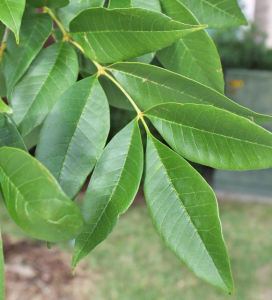
The compound leaf of a green ash tree. Photo Credit: University of Florida/IFAS
As a Florida-Friendly plant, Green Ash is fairly low-maintenance and provides many environmental services. The species, like any other plant, requires supplemental water and fertilizer during the establishment period, generally the first year or so after planting, but doesn’t demand much else from gardeners after that. Green Ash specimens in Florida also don’t have much in the way of pest problems (the invasive Emerald Ash Borer has devastated ash populations in northern states but thankfully has not yet been found in Florida). However, as a host plant for several native pollinators, including the Eastern Tiger Swallowtail, Mourning Cloak, Orange Sulphur, and Viceroy Butterflies, you may occasionally find caterpillars munching away on the tree’s foliage. If you can handle a little leaf damage, try to leave any caterpillars alone and enjoy the stunning butterflies they later morph into!
Green Ash is a beautiful, ultra-adaptable shade tree. Though the species prefers moist areas, there aren’t many sites the tree can’t thrive in. Do you have a low-lying area near a swamp or stream that stands in water from time to time? Great! Green Ash will thrive. Do you need a street tree to survive in a harsh environment with a cramped root zone surrounded by concrete? Green Ash will be right at home there as well. Green Ash is simply a classic shade tree with many interesting attributes that improves the look of any landscape it occupies. Plant one today!
For more information about Green Ash, other shade tree species, or any other horticultural/agricultural topic, contact us at the UF/IFAS Calhoun County Extension office.

by Joshua Criss | Mar 18, 2022
A Problem of Anticipation
The feeling is palpable, everyone is ready for spring. Can you hear them? The seeds beckoning in their packets, begging you to bury them in the soil. Every gardener struggles with this dilemma in early spring, but this year will surely be different. Maybe just maybe I can get my garden planted and watch with bated breath as life peeks its tiny shoots through the soil. Inevitably, harsh reality will set in with the realization that there will be a freeze dowsing your dreams before they take root.
Trying as that may be there is a respite. A small group of plants has heard your concerns. They provide the early spring color we so desperately seek in our landscapes. The trees and shrubs have answered your cries reaching out in the most beautiful way they know how. The saucer magnolias (Magnolia x soulangeana) have given us their teacup flowers all purple and perfect. The azaleas (Rhododendron spp.) are in full swing with all their magnificence shining bright. There is one tree that stands above them all in Florida landscapes. This month you’ll begin to see a tree that is the ultimate harbinger of springtime. A tree so native in the Panhandle that it bears the state’s name within its own. The tree I am speaking of is the Flowering Dogwood (Cornus florida).
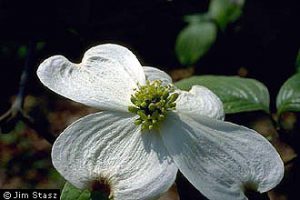
Dogwood flower and bracts in bloom. Photo Credit Jim Stasz, USDA
A Tree Described
Florida in this instance derives from the Spanish florido meaning “full of flowers”. This tree will not disappoint on this front. A very common home landscape feature, it performs well in zones 5-9A. Growing between 20-30 feet in height with the spread to match, they may be pruned to a single trunk or allowed to grow in multiples to fit the landscape. This tree is known for early spring color, and thrives in sun of shade. Sometime between March and May, a splash of white or pink (sometimes red, cultivar dependent) lasting several weeks will rear up amid your winter scenery.
The showiness of this plant is not a flower, but a protective leaf structure known as a bract. The true flowers are small yellow to green clusters in the center of these bracts. Depending on the site conditions, the foliage turns maroon and the flowers to red berries in the autumn. The spring flowers, and later berries are a useful food source for pollinators and local birds respectively.
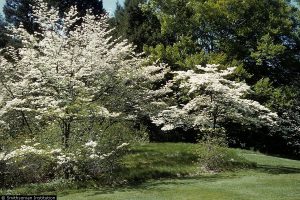
Dogwood trees in the wild. Photo Credit Smithsonian Institution
More Information
Flowering Dogwoods is a valuable addition to any gardener’s plot and fits right into a Florida Friendly Landscape. For more information on these trees, see this Ask IFAS document, or contact your local extension agent for additional information on this and any topic regarding your gardens and more.
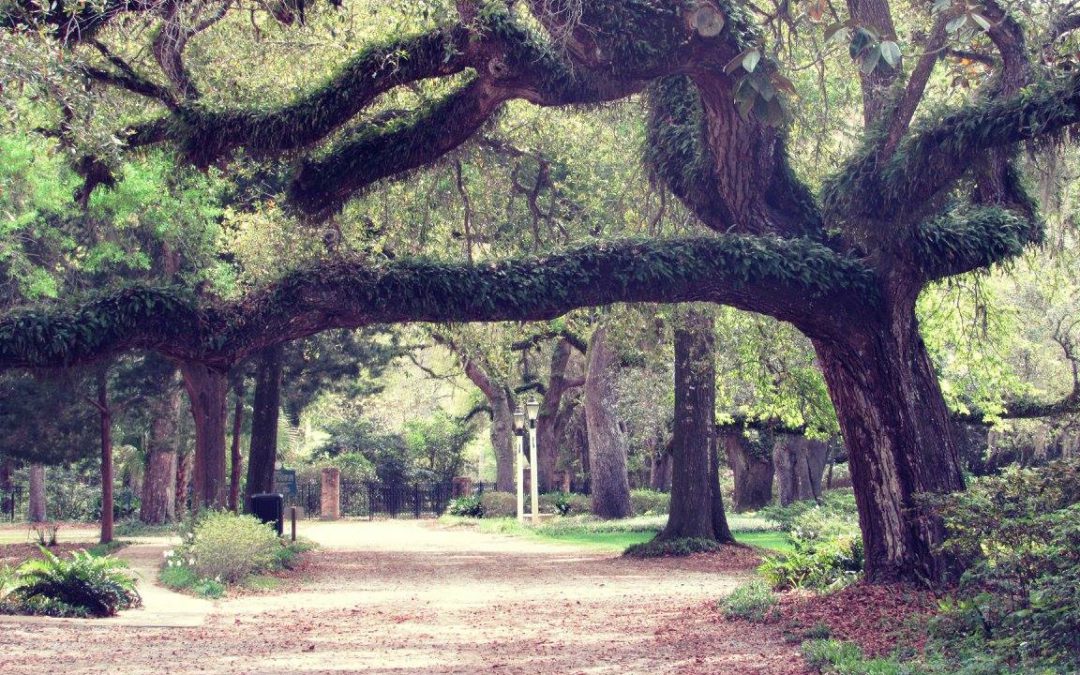
by Evan Anderson | Jan 20, 2022
Florida’s state observance of Arbor Day falls on January 21st in 2022. On this day, people are encouraged to plant trees and recognize their importance. Trees provide us with shade and shelter, filter air and water, and increase biodiversity as well as acting as a source of materials for building and industry. Half of Florida’s land area is forested and North Florida has a large timber industry. Given the importance of trees to our wellbeing and the erratic and sometimes extreme weather in our region, the question occasionally arises, “What trees are best to plant here?”.
The answer to that question depends heavily on the needs of the person asking it. A landowner looking for long-term profit from forestry may choose to plant longleaf pines, despite the risks that hurricanes pose. A homeowner desiring a shade tree, however, might want a different answer.
There are plenty of varieties of trees that grow well in the panhandle of Florida, and the further one lives from coastal areas, the greater the options. Particularly along the shores, however, choices are limited by soil types, exposure to high winds, and even salt spray. So which are the toughest and hardiest trees for our area?
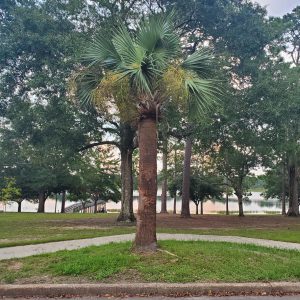
A sabal palmetto.
Florida’s state tree is the sabal palmetto. Also called the cabbage palm, this palm is particularly cold tolerant, withstanding temperatures down to 15º F. Once established, they are drought tolerant and fairly resistant to pests and diseases, as well as being particularly sturdy in high winds. Though they may be thought of as “common”, this is a testament to their survivability in our climate and they should not be dismissed as an option for landscapes.
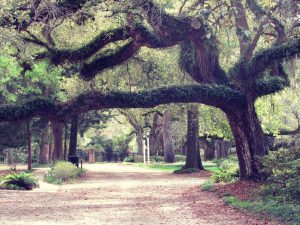
A large, old Southern live oak.
Both the Southern live oak and especially the sand live oak are exceptionally survivable trees. Sand live oak is found closer to the coast, where it tends to grow in beautiful multi-trunked forms slightly inland, or in lower thickets along the dunes. It tends not to reach the same heights as Southern live oak, but does well in the harshest of
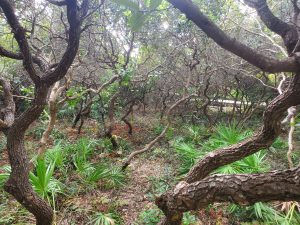
Sand live oaks growing near the beach dunes.
conditions, lasting through almost anything nature can throw at it. Even if defoliated by heavy storm winds, these trees survive. Hurricanes claim only the occasional live oak that catch enough wind to uproot and topple the entire tree, which is not a common occurrence.
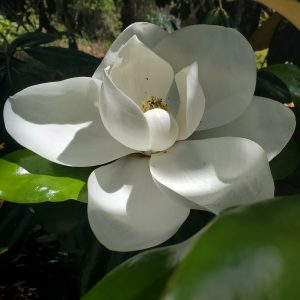
The bloom of a Southern magnolia.
Southern magnolia comes in many sizes, from huge old specimens to more compact cultivars such as ‘Little Gem’, which can be trained to grow as hedges. Tolerating a wide range of soil moisture, these trees are rarely harmed by disease, though scale insects often take up residence on their leaves (which rarely seems to bother the trees, even if infestations are heavy). With gorgeous and fragrant blooms in the springtime, Southern magnolia stands up in high winds and makes an excellent addition to a landscape.
For more information on trees that do well in storms, see our EDIS publication on the topic. Also note that native species, trees that are properly pruned, those that are well established as opposed to newly planted, and trees free of disease or damage tend to survive better in any case. Ensuring that plants of any sort are placed in the right spot can serve the landscaper well in the long run as well – see the Florida Native Plant Society’s website for help in choosing the right plants. As always, your local Extension office is available to assist with questions as well.
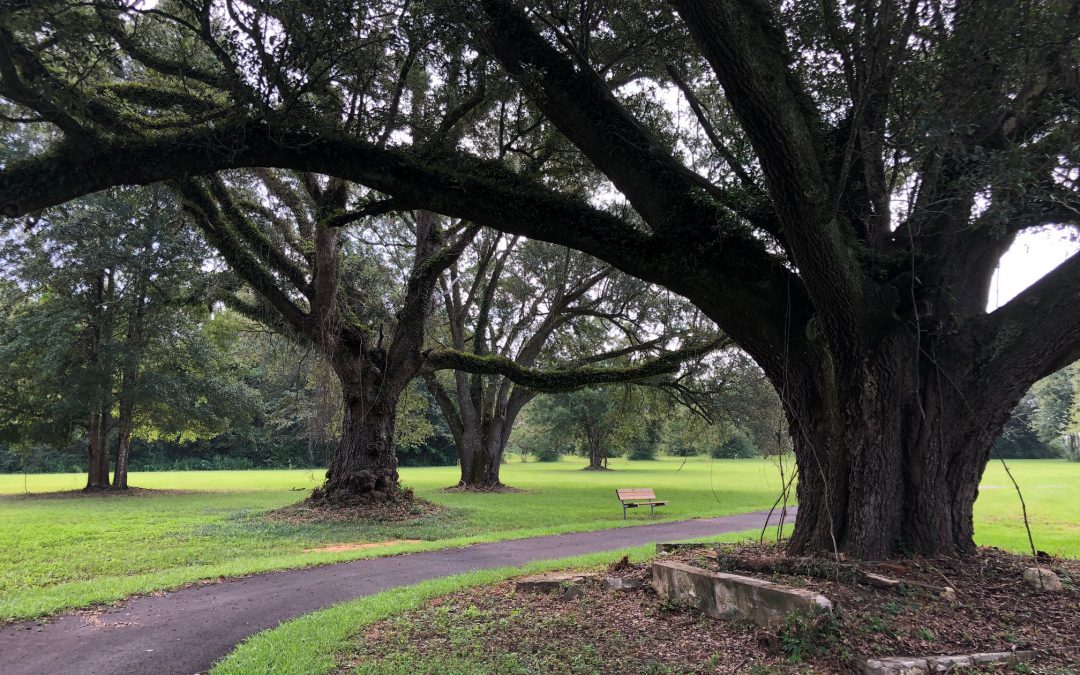
by Sheila Dunning | Dec 31, 2021

Even with this young sycamore, you’ll be made in the shade. Credit: UF/IFAS.
The best time to plant a tree is twenty years ago. The second-best time is Arbor Day. Florida recognizes the event on the third Friday in January but planting any time before spring will establish a tree quickly.
Arbor Day is an annual observance that celebrates the role of trees in our lives and promotes tree planting and care. As a formal holiday, it was first observed on April 10, 1872, in the state of Nebraska. Today, every state and many countries join in the recognition of trees impact on people and the environment.
Trees are the longest living organisms on the planet and one of the earth’s greatest natural resources. They keep our air supply clean, reduce noise pollution, improve water quality, help prevent erosion, provide food and building materials, create shade, and help make our landscapes look beautiful. A single tree produces approximately 260 pounds of oxygen per year. That means two mature trees can supply enough oxygen annually to support a family of four.
The idea for Arbor Day in the U.S. began with Julius Sterling Morton. In 1854 he moved from Detroit to the area that is now the state of Nebraska. J. Sterling Morton was a journalist and nature lover who noticed that there were virtually no trees in Nebraska. He wrote and spoke about environmental stewardship and encouraged everyone to plant trees. Morton emphasized that trees were needed to act as windbreaks, to stabilize the soil, to provide shade, as well as fuel and building materials for the early pioneers to prosper in the developing state.
In 1872, The State Board of Agriculture accepted a resolution by J. Sterling Morton “to set aside one day to plant trees, both forest and fruit.” On April 10, 1872, one million trees were planted in Nebraska in honor of the first Arbor Day. Shortly after the 1872 observance, several other states passed legislation to observe Arbor Day. By 1920, 45 states and territories celebrated Arbor Day. Richard Nixon proclaimed the last Friday in April as National Arbor Day during his presidency in 1970.
Today, all 50 states in the U.S. have official Arbor Day, usually at a time of year that has the correct climatological conditions for planting trees. For Florida, the ideal tree planting time is January, so Florida’s Arbor Day is celebrated on the third Friday of the month. Similar events are observed throughout the world. In Israel it is the Tu B Shevat (New Year for Trees). Germany has Tag des Baumes. Japan and Korea celebrate an entire week in April. Even Iceland, one of the treeless countries in the world observes Student’s Afforestation Day.
The trees planted on Arbor Day show a concern for future generations. The simple act of planting a tree represents a belief that the tree will grow and someday provide wood products, wildlife habitat, erosion control, shelter from wind and sun, beauty, and inspiration for ourselves and our children.
“It is well that you should celebrate your Arbor Day thoughtfully, for within your lifetime the nation’s need of trees will become serious. We of an older generation can get along with what we have, though with growing hardship; but in your full manhood and womanhood you will want what nature once so bountifully supplied and man so thoughtlessly destroyed; and because of that want you will reproach us, not for what we have used, but for what we have wasted.”
~Theodore Roosevelt, 1907 Arbor Day Message
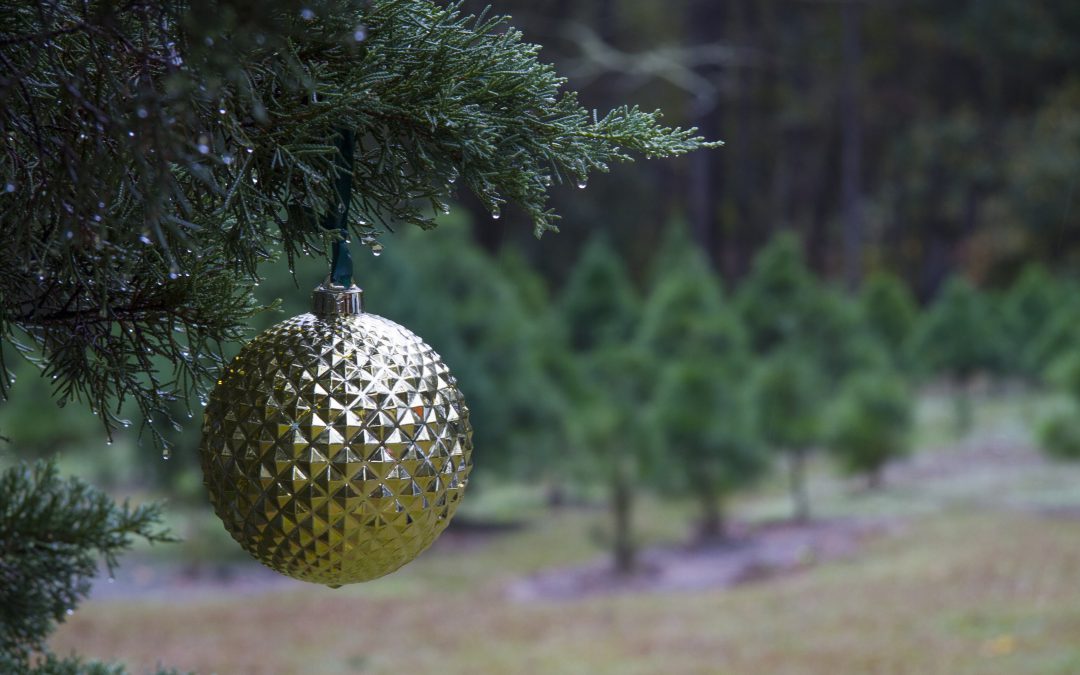
by Daniel J. Leonard | Dec 31, 2021
Christmas is among my favorite holidays. The religious significance, music, lights, amazing food, fellowship with family, and giving and receiving gifts all lend something special to the season. However, the tradition that arguably gets the most attention is selecting and putting up a Christmas tree! Those that participate in the festivities and put up a Christmas tree have three options: purchasing an artificial tree, purchasing a real tree, or growing your own.
While I like the convenience of a pre-lit tree as much as anyone, artificial trees don’t do a whole lot for the environment or sustainable US agriculture. They are almost exclusively produced overseas and contain non-biodegradable plastics. Not the best. If you select option two and choose to purchase a real tree, you’ll help support a sustainable US agriculture industry! According to the National Christmas Tree Association, there are ~25-30 million Christmas trees sold annually in the US and 350 million more currently growing on Christmas tree farms waiting their turn! Purchasing real Christmas trees also ensures that the over 100,000 Christmas tree farm workers remain employed, and the 1/3 million acres US Christmas tree farms comprise will remain non-developed “green spaces”!
But for the green-thumbed Christmas enthusiast that’s willing to put in a little time and effort, there is a third choice – growing your very own Christmas tree right at home! In the Panhandle, there are several species, Florida natives and not, that make wonderful Christmas trees and are easy to grow!
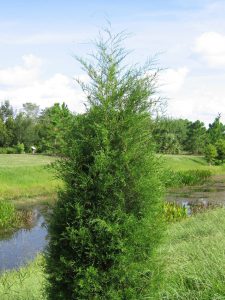
Red Cedar makes a fine Florida Christmas tree!
Red Cedar (Juniperus virginiana) – This Florida native is the classic southern evergreen. Growing quickly to the desired heights of 4’-10’, emitting a “Christmas tree smell”, and possessing dark, dense foliage, Red Cedar makes an excellent Christmas tree! Red Cedar performs very well in most soils but does not like wet feet and will not tolerate continuously saturated areas.
Leyland Cypress (x Cupressocyparis leylandii) – A hybrid of Alaskan Cedar and Monterrey Cypress, Leyland Cypress is recognized as one of the most popular Deep South grown Christmas trees for good reason. Leylands grow exceptionally fast, are a desirable forest green color, and have a naturally conical shape! Though not recommended as long-term landscape trees in Florida due to disease susceptibility, Leylands do very well in short Christmas tree rotations.
Thuja ‘Green Giant’ – ‘Green Giant’ is a cultivar of Thuja and is similar in appearance to Leyland Cypress. Though not quite as deep green in color as Leyland, ‘Green Giant’ also grows rapidly (up to 3’-4’ annually), tolerates many soil conditions, and has no serious insect/disease issues.
Arizona Cypress (Cupressus arizonica var. arizonica) – Arizona Cypress is the Christmas tree for those who would normally choose to be different by purchasing a blue, silver, or white artificial tree! Famous for its striking blue/silver foliage, Arizona Cypress is native to the American Southwest but thrives in the drier sandy soils found in many parts of the Panhandle.
Sand Pine (Pinus clausa) – The quintessential “Cracker Christmas Tree”, Sand Pine is native to the deep sandy ridges of Florida. Normally thought of as a scrubby, low-value tree, when shaped a little, the short-needled Sand Pine makes an excellent Christmas tree! Obviously preferring a dry, sandy site but capable of growing nearly anywhere, Sand Pine has no pest or disease issues and grows fast! If you want a true, old-school Florida Christmas tree, Sand Pine is it.
Regardless of the species you choose, implementing the following few maintenance tips and expectations will lend best results:
- Cut/remove J or circling roots before planting.
- Plant just higher than ground level.
- Refill the hole with native soil from the site.
- Regular irrigation for the first several months of their lives is necessary and trees will benefit from supplemental fertilizer applications twice a year (spring and mid-summer).
- Shaping trees each summer with hedge shears to achieve the desired dense, compact shape will allow for a uniform tree with no “holes”.
- Plant several trees per year to ensure a nice tree come December, just in case.
- Florida grown Christmas trees will NOT have the exact look of fir or spruce. Adjust expectations accordingly.
- Most Florida grown Christmas trees do NOT have rigid branches and cannot support heavy ornaments. Again, adjust expectations accordingly.
While Christmas tree species that perform well in the Panhandle will not have the exact look of a classic fir or spruce sourced from the Carolinas, they certainly mimic the look and there is something to be said for walking outside and harvesting your own tree to put presents under! For more information on growing your own Christmas trees or other horticultural topics, contact your local UF/IFAS County Extension office! Happy New Year!


















